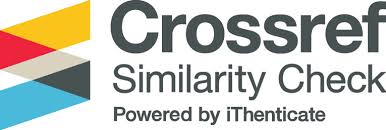Pengaruh Superoksida Dismutase Rekombinan Staphylococcus equorum Terhadap Viabilitas Sel dan Deposisi Kolagen Pada Sel Fibroblas 3T3 Yang Dipaparkan UVA
Abstract
UVA is the main external factors causing skin aging. UVA increase matrix metalloproteinase (MMP) synthesis that degrade collagen indirectly through reactive oxygen species. Superoksida dismutase (SOD) catalyzes the conversion of superoxide anions to hydrogen peroxide and oxygen. SOD can be used as a cosmetic’s component to prevent skin aging. The objective of this research to determine rSOD S. equorum ability to increase collagen deposition using fibroblast 3T3 against UVA.
The research was initiated by the confirmation of E. coli BL21(DE3) carrying pJExpress®414-sod. rSOD was overproduced in E. coli BL21(DE3) by IPTG induction to a final concentration of 1 mM for 4 hours at 37oC. rSOD purification was done using an Ni-NTA affinity column with gradient imidazole concentrations for elution. Various concentrations of rSOD was added to fibroblast 3T3 cell culture after UVA irradiation to determine its role in collagen deposition. The effect of rSOD was analyzed by fibroblast viability using Alamar blue and collagen deposition with picro sirius red.
The results showed that fibroblast cell viability exposed with UVA for 45 minutes in the presence of 4, 8, and 16 unit rSOD was not significantly affected, however, the collagen deposition was significantly increased about 3.02%; 20.03% and 35.75% respectively compared to cell without rSOD. This result indicates that rSOD is a good candidate for an anti photoaging agent.













